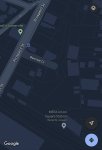During the development of the 2005 Beyond Lechmere Major Investment Study/Alternatives Analysis (MIS/AA), the alternative that evaluated light rail service (Alternative 1C) included evaluating the extension of service beyond the Mystic River to West Medford. The MIS/AA’s proposed light rail alignment traveled via the Massachusetts Bay Transportation Authority’s (MBTA) Lowell Commuter Rail Line beyond the Mystic Valley Parkway/Route 16 and Mystic River to terminate at a location south of the existing West Medford Commuter Rail Station near High Street/ Route 60. This termination point was determined to have a number of operational and environmental challenges, including the crossing of an existing highway-railroad at-grade crossings and impacts on the existing historic Mystic Valley Parkway/Route 16 and the Mystic River structures.
By extending the Green Line service across the Canal Street grade crossing, this existing two-track crossing would become a four-track crossing (two Green Line tracks; two commuter rail tracks). The differing operational characteristics of the Green Line, commuter rail, and roadway would significantly raise safety concerns. In a similar situation in Los Angeles, the accident rates are significantly higher than the national average; ninety people have died on the Los Angeles County Metropolitan Transportation Authority’s 22-mile Blue Line (consisting of 100 at-grade crossings). This line has had more than 821 recorded incidents between its inception in July 1990 and July 2008. All of the at-grade crossings in Los Angeles have grade crossings gates and lights.
With the potential of having Green Line vehicles cross the roadway in each direction, safety concerns were raised at the Canal Street crossing. Additionally, extending the Green Line to West Medford would require the widening of the historic structures over the Mystic Valley Parkway/Route 16 and the Mystic River and could impact the parklands beneath the structures. If these structures were impacted, there would be an increased amount of environmental documentation and coordination that would be required, which could significantly impact the ability to meet the Project schedule of December 31, 2014 and could incur additional expenses to the Project. For these reasons, it was determined during the EENF process that a variation of the Alternative 1C from the MIS/AA was proposed with a Project terminus south of the Mystic Valley Parkway/Route 16, in the vicinity of College Avenue. The Secretary’s Certificate specifically cited that a potential terminus be evaluated in the vicinity of the Mystic Valley Parkway/Route 16.



